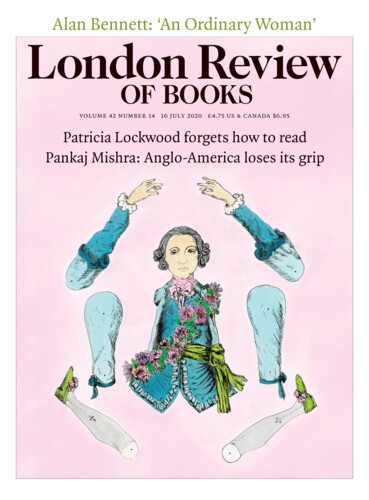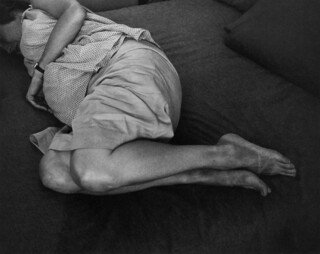‘Iwould like to be able to photograph constantly, every hour, every conscious hour,’ Dorothea Lange told an interviewer in 1963, two years before she died. There had always been constraints on how she could photograph: first, the limp that remained after she had polio when she was seven, growing up in Hoboken, New Jersey in a German immigrant family; then the need to make money at her portrait studio in San Francisco; then the time and attention her first husband, the painter Maynard Dixon, and their two sons required of her; then the travel in order to document the Great Depression for the government with her second husband, Paul Taylor, an economist; then fame, that hard limit. But it turns out that she did photograph almost constantly, leaving behind nearly forty thousand images, of which this – Winters, California, taken in 1955 – is one.
Lange’s most famous picture, Migrant Mother, in which a woman gazes into the landscape, her hand at her mouth, children folded around her like a Renaissance Madonna, is famous partly because it was immediately put into the public domain. The rest of her work is mostly hidden away in the Oakland Museum of California. (I could scream when I think of what happens to women artists’ archives: burned like Plath’s, forgotten like Lange’s.) A Lange retrospective opened in February at MoMA in New York (until lockdown forced it online), the first there for 54 years. Alongside that show, the photographer Sam Contis has made a book, a collaboration with Lange really, from pictures she unearthed in Oakland then printed, cropped and arranged into her own sequence, using Lange’s generosity to younger photographers as a guiding principle (Lange closed her 1966 MoMA retrospective with pictures taken by her assistant).
Contis has called the book Day Sleeper (Mack, £27), after a sign Lange photographed in the 1930s, pinned to a door as a warning. Like the migrant mother, the day sleeper seems at first to be tightly tied to a place and a time and a person: California, the 1930s, someone who is working too much or can’t find work at all. Those day sleepers are here: a pea-picker sleeping in a tent in the middle of the morning, forehead slumped into her bent elbow and magazine left open on the mattress; a man in a denim shirt fallen back into sleep as if onto a cloud. But there are other day sleepers Contis has picked out of Lange’s archive: her son with a towel draped over his eyes against the light (the day sleeper on holiday); a man in a suit lying in the noonday sun, a raked fedora covering his face (the day sleeper on his lunch break); a girl sleeping in her coat on a rough plank, her blonde hair flopped over her forehead and her ribbon bow dangling (the day sleeper in transit); her pregnant daughter-in-law – in Winters, California – curled up on the sofa, feet criss-crossed with tan lines from her sandals (the day sleeper in an act of self-care). What was once plainly political has become familial, casual, intimate, or all of those together, and then back round to political again. When I look at Lange’s daughter-in-law sleeping, I remember that the US is the only OECD country where women have no right to paid maternity leave, and when I look at the child sleeping in her coat, I think of – well, you know, because you’re thinking it already too. But the photographer herself isn’t a day sleeper – instead, she does the seeing, photographing ‘every conscious hour’ with the lifelong attentive curiosity that somehow she thought at the end of her life she hadn’t achieved.
Send Letters To:
The Editor
London Review of Books,
28 Little Russell Street
London, WC1A 2HN
letters@lrb.co.uk
Please include name, address, and a telephone number.


